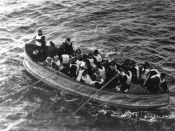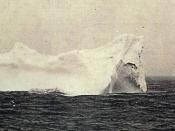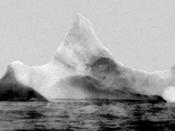Dimensions: Length: 882 feet 9 inches Height: 97 feet Width: 92 ÃÂý feet Displaced Weight: 52,250 tons Maximum Speed: 25 knots Average Speed: 21-22 knots Decks: 9 Lifeboats: 16 lifeboats (76 people each), 4 collapsibles (20 people each) Bilge Tanks: 300 feet to prevent rolling in heavy seas Reasons The Titanic Sank: a) Loss of buoyancy and displacement b) Reduction in hull speed c) Weakened rivets from cold temperatures d) Gravitational force acting on hull a) Loss of buoyancy and displacement Archimedes Principle states that when an object is placed in a liquid that is more dense than the object it floats. This is called buoyancy. The floating object replaces a certain volume of water, which means that the water has to move aside for the object. This is called displacement. The Titanic had 16 watertight compartments. The iceberg had put holes in the first five compartments. This meant that the bow filled with water.
The water being in the bow meant that the bow lost its displacement and therefore its buoyancy and the weight of the water made it sink to an angle where the water could flood over the top of each compartment. Losing even more buoyancy made the Titanic's bow sink lower and lower, eventually pulling the stern into the air from the weight and gravitational pull in the bow.
Mr Andrews in the 1996 film "ÃÂTitanic', by James Cameron puts it best: " Water 14 feet above the keel in 10 minutes, in the forpeek, in all three holds and in boiler room No. 6. That's five compartments. She can stay afloat if the first four compartments are breached, but not five"æ.. As she goes down by the head, water will spill over the tops of the bulkheads at E Deck, from one to the next"æ"æ...


